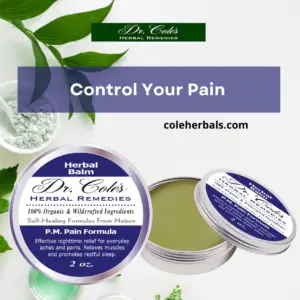
Adderall, the most popular drug for attention deficit hyperactivity disorder (ADHD), has been used by many of the 6.4 million American children currently diagnosed with ADHD but also misused by 20-30% of all students who are trying to gain better concentration for taking tests in college. It can be extremely addictive, and has a row of side effects including nervousness, dry mouth, poor circulation, numbness in fingers, difficulty breathing, stomach pains, loss of appetite, and heart problems. In rare cases Adderall can lead to mental illness and psychosis. And there also has been growing evidence that Adderall and similar ADHD medications may lead to damage to areas of the brain, especially if it is a developing brain of a child.
How does Adderall work?
Adderall increases dopamine and norepinephrine – the neurotransmitters that help control the brain’s pleasure center and parts of the brain that are responsible for decision making and attention span. Some medical professionals believe that those who have lower levels of both of these neurotransmitters have ADHD.
“There’s no gold standard test for ADHD, and there are no biological or physiological markers,” said Paul Marshall, Ph.D, a clinical neuropsychologist at the Hennepin County Medical Center in Minneapolis, according to Self.
People who do not have ADHD and take Adderall experience feeling more alert and a boost of confidence, but it does not actually affect how smart a person is. Often those who take Adderall before a college test do not perform better but they think they do, said Dr. Anjan Chatterjee, M.D., a professor of neurology at the University of Pennsylvania.
When abused Adderall can be as dangerous as street drugs, said Nora Volkow, M.D., director of the National Institute on Drug Abuse in Bethesda, Maryland.
While there does not seem to be a magic pill yet that instantly solves concentration problems, there are multiple natural things you can do to lessen and sometimes eliminate ADHD-like symptoms.
Low Levels of These Vitamins and Minerals Can Lead to Problems Concentrating
Lendon Smith, M.D. was a pediatrician and an advocate of vitamin use for children. In a 2001 interview with Dr. Joseph Mercola he explained that after studying the issue of ADHD and working with children who had ADHD symptoms, he found that many were low in calcium, magnesium, vitamin B6, and essential fatty acids.
Omega-3 and Omega 6: A 2009 study found that omega-3 fatty acid supplementation was able to control ADHD symptoms in elementary school children. Longer duration of treatment produced better results. Another study from the same year concluded that taking omega-3 and omega-6 fatty acids for 6 months significantly helped reduce ADHD symptoms in children and adolescents.
Zinc: A 2011 study showed potential for ADHD symptom reduction when giving a daily dose of 30 mg of zinc to children for at least 8 weeks. They quoted that a similar mid-eastern trial that reported more significant benefits from 13-40 mg of zinc as the sulfate – the reason for the difference can be in genetics or different rate of zinc deficiency.
Magnesium with Vitamin B6 Combination: In a 2006 study children received magnesium-vitamin B6 supplementation for at least two months and had significant reduction of symptoms. When they stopped taking these vitamins, the symptoms reappeared in a few weeks, and the vitamin levels dropped at the same time.
Calcium: According to Dr. Yannick Pauli, from Switzerland, because calcium facilitates the release of neurotransmitters, calcium deficiency leads to symptoms similar to those of ADHD – inability to pay attention and irritability. But make sure that you’re also getting enough magnesium if you’re taking calcium supplements because your body needs magnesium to properly absorb it.
You should choose natural and whole foods based vitamin and supplement sources whenever possible as well. Unfortunately, we don’t get as many of these nutrients in our diets these days due to poor soil quality, so buy organic from farmers that use the best practices whenever possible to get more of these and other crucial vitamins and minerals in your diet.
Calcium supplements have many drawbacks. It’s important to prioritize getting your calcium from pasture-raised meat, organic, dark leafy greens, and wild caught seafood among other sources.
***
Have you experienced it yet? The best culinary Sea Salt out there –
This natural sea salt from Colima Sea Salt!
A Magnesium-rich, Microplastic-free Sea Salt (unlike many brands of Sea Salt on the Market Today)
Click Here or on the Picture Below to Order Your Free Bag Today
***
Other Nutritional Changes
Avoiding Food Additives: Health Media reported that scientists have been studying a potential link between ADHD symptoms and food additives, especially food coloring often used in candy, cereal, ice cream, pudding, and soft drinks. While there are not enough studies on most additives individually, studies that looked at groups of additives together did see a connection between them and hyperactivity.
The dyes that may especially exacerbate ADHD symptoms are: Blue No. 1, Blue No. 2, Green No. 3, Orange B, Red No.3, Red No. 40, Yellow No. 5, and Yellow No. 6. The biggest food preservative to avoid is sodium benzoate.
A Purdue University study concluded that just one serving of food containing dyes a day may harm children’s behavior. And since there is 17.6 mg of dyes in Kraft Macaroni & Cheese, 33.3 mg in Skittles candies, and 52.3 mg in Kool-Aid Burst Cherry, our children may be consuming as much as 100 mg or more of dyes every day.
Lifestyle Changes Play a Big Role
Neuropsychiatrist Sydney Walker, author of the book “The Hyperactivity Hoax” writes that attention disorders are “symptoms of modern life, rather than symptoms of modern disease.” Because most of us lead a fast-paced technology-driven lifestyle, we are not used to being able to slow down, sit down and concentrate.
Choosing a career and lifestyle that brings you joy, passion and the ability to live in the moment can make all the difference for many people.
Transcendental Meditation
Daily meditation practice brings great results after 3 months in the ability to control your thoughts, decrease anxiety and irritability, and reduce stress. Because stress compromises many of the brain’s abilities including the ability to concentrate, reducing stress is beneficial for ADHD symptoms and those who simply would like to gain greater attention span and improve concentration. Transcendental Meditation, a specific mantra-style meditation, has received the most attention with over 380 studies showing its positive effect of physical and mental health.
An exploratory study published in 2008 December issue of Current Issues in Education showed great results in ADHD symptoms reduction in students ages 11-14, when they practiced meditation twice in school for 3 months.
French Maritime Pine Bark
There is a supplement called French maritime pine bark that is all-natural, and a popular Adderall substitute in Europe to help with concentration. Learn more by clicking on this article.
Foods That Aid Concentration
Foods that aid concentration include the following: blueberries, fatty fish and wild caught fish oil, eggs, coffee, nuts (preferably soaked and sprouted), seeds like pumpkin seed and pumpkin seed oil, and dark, leafy green vegetables.
*****
*****
Thanks for installing the Bottom of every post plugin by Corey Salzano. Contact me if you need custom WordPress plugins or website design.







Leave a Reply
You must be logged in to post a comment.